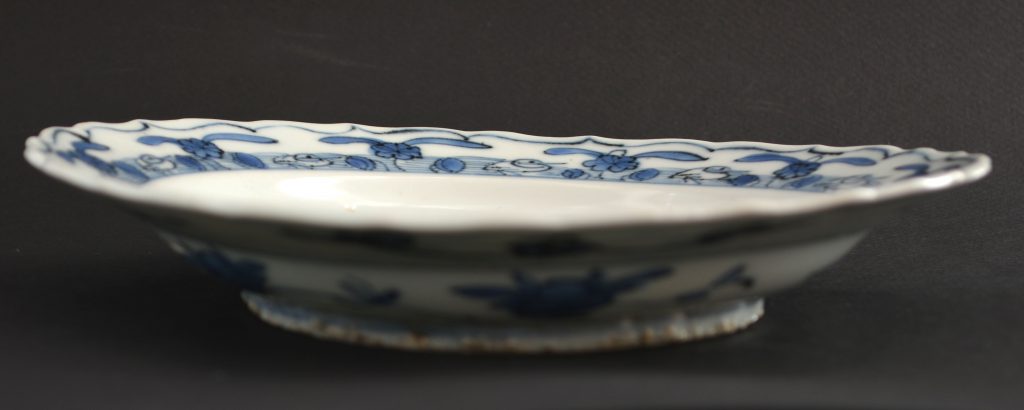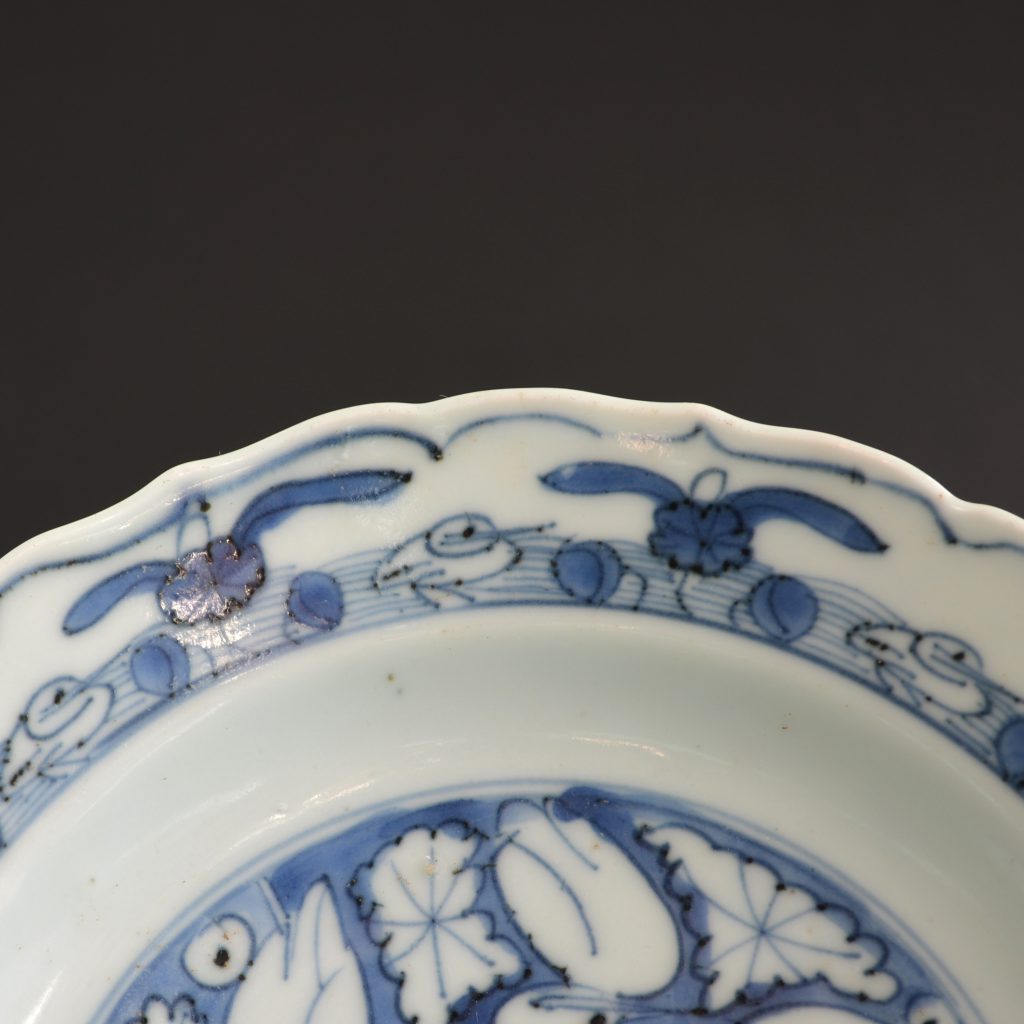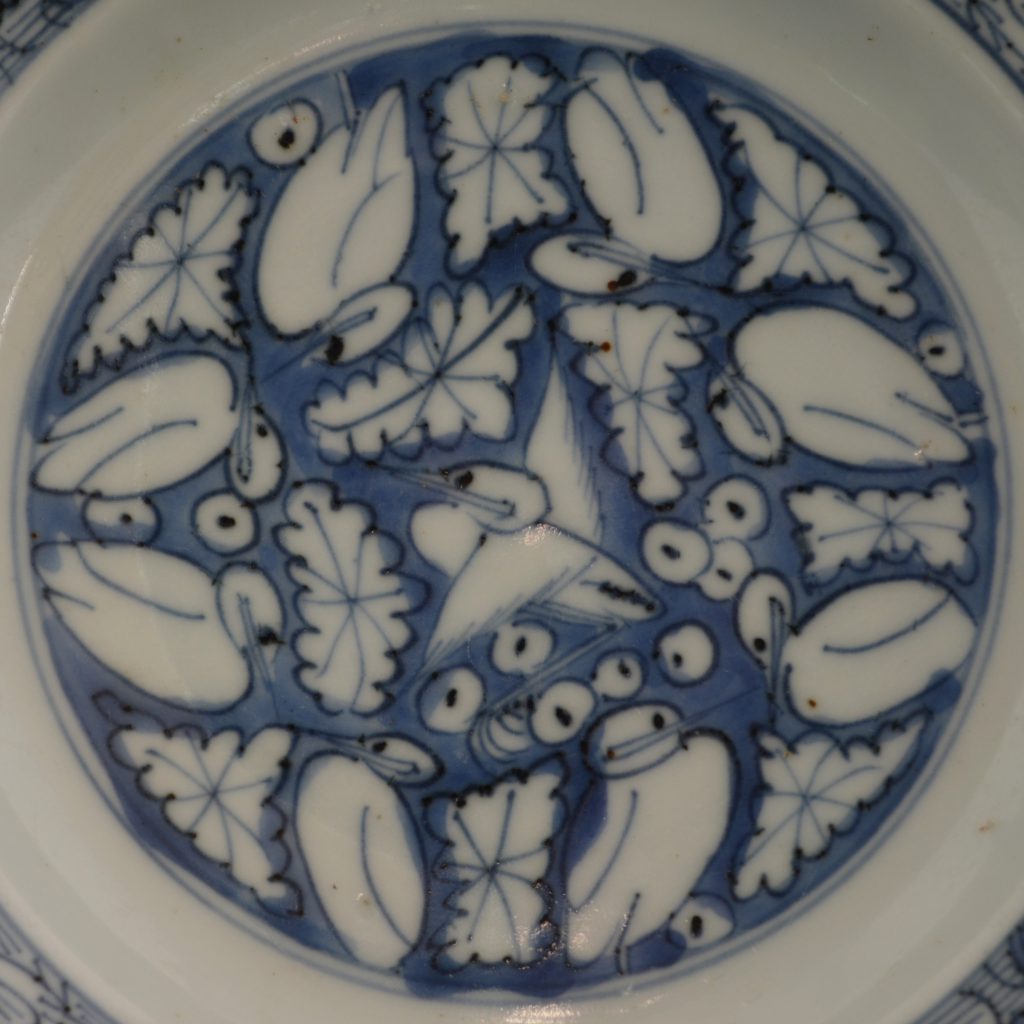
Ming Blue and White Porcelain Dish c.1570 – 1590
A Ming porcelain dish, Longqing (1567 – 1572) or early Wanli period c.1570-1590. The moulded porcelain dish has a barbed rim and is painted in blue and white with cranes among lotus.
SOLD
- Condition
- In excellent condition, the dish is a bit worped, a few very minor scratches to the base.
- Size
- Diameter : 19.5 cm (6 3/4 inches). (This was previous shown as 29.5 cm)
- Provenance
- N/A
- Stock number
- 24532
Information
Cranes / He :
One of the most important birds represented in Chinese art is the crane, He. It is a very popular motif representing longevity, it often combined with other longevity symbols such as the pine or shoulou. It`s white feathers further emphasis the connection with long life. Folklore says the crane can live more than six hundred years and has the ability to carry the souls of the dead to the Western Paradise. A pair of cranes represents a wish for a long marriage, a crane can be used in a pun for `together`. A crane flying is symbolic of a wish for a rise in status, among the nine ranks for civil officials the crane represents the first rank.
Lotus :
The lotus is one of the most important symbols in the Chinese art. This Buddhist emblem is a symbol of purity, as the perfect flower grows out of muddy ponds without a stain. The words for lotus in Chinese has the same meaning as to bind, connect (in marriage). It is one of the Eight Auspicious Symbols of Buddhism. It is the flower used to represent summer.




